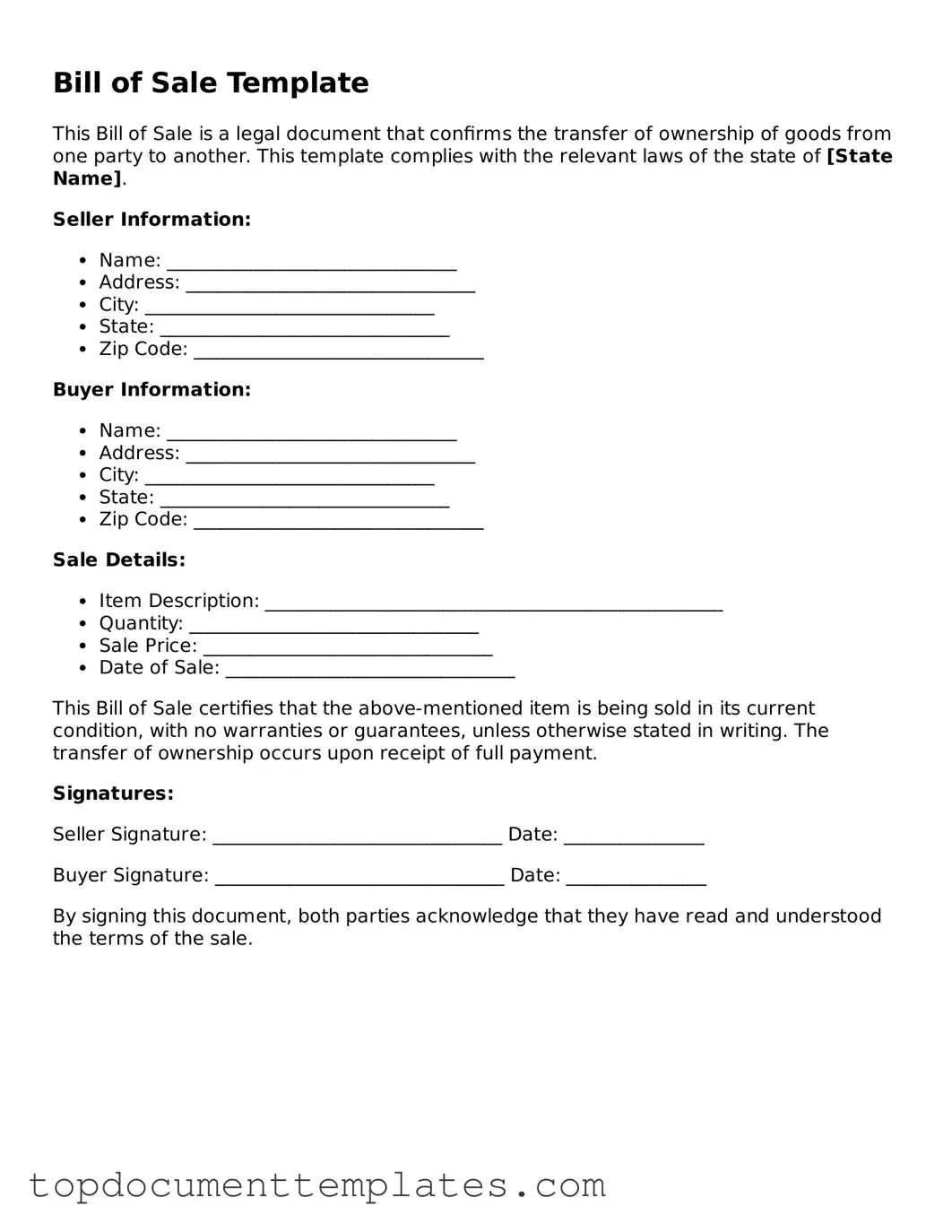A Bill of Sale form serves as an important document in the transfer of ownership for personal property. It provides a clear record of the transaction between the seller and the buyer, detailing essential information such as the names and addresses of both parties, a description of the item being sold, and the sale price. This form helps to protect both the buyer and the seller by documenting the terms of the sale and ensuring that both parties understand their rights and responsibilities. Furthermore, it can include additional clauses that address warranties, representations, and any conditions related to the sale. Using a Bill of Sale form not only formalizes the transaction but also provides a legal safeguard in case of disputes or misunderstandings in the future. It is a straightforward yet powerful tool for anyone looking to buy or sell personal property, making it essential for a smooth and transparent exchange.
